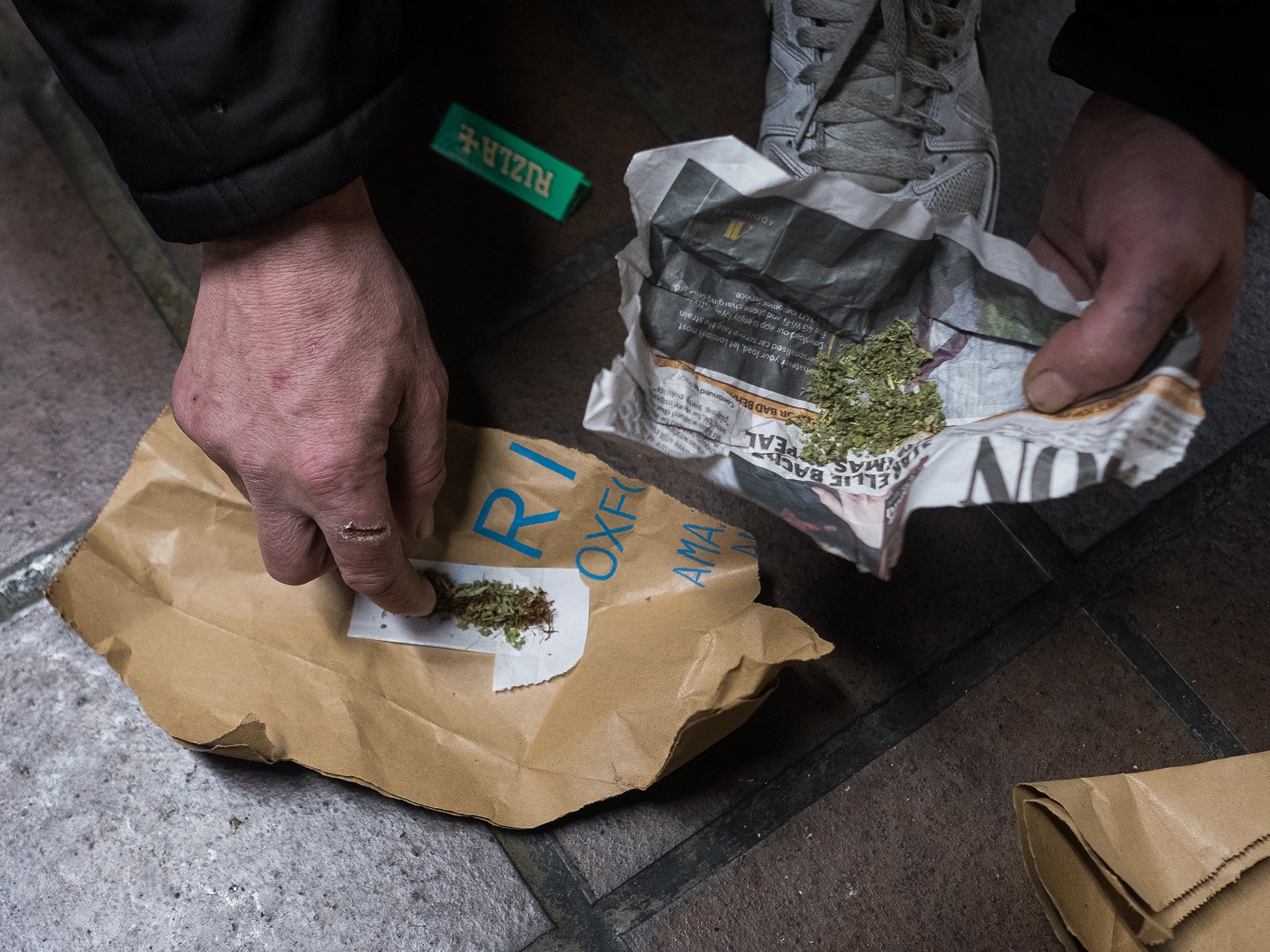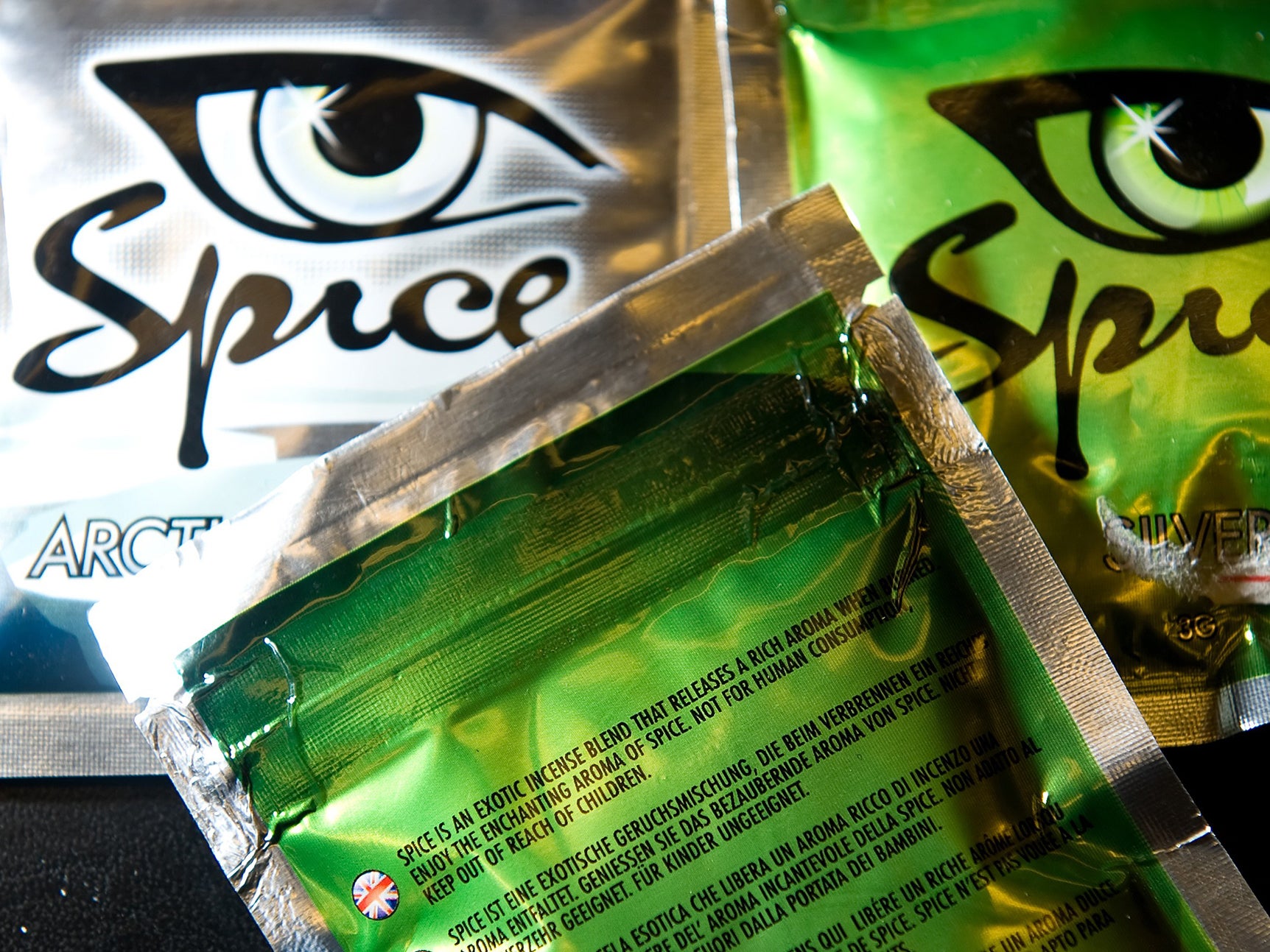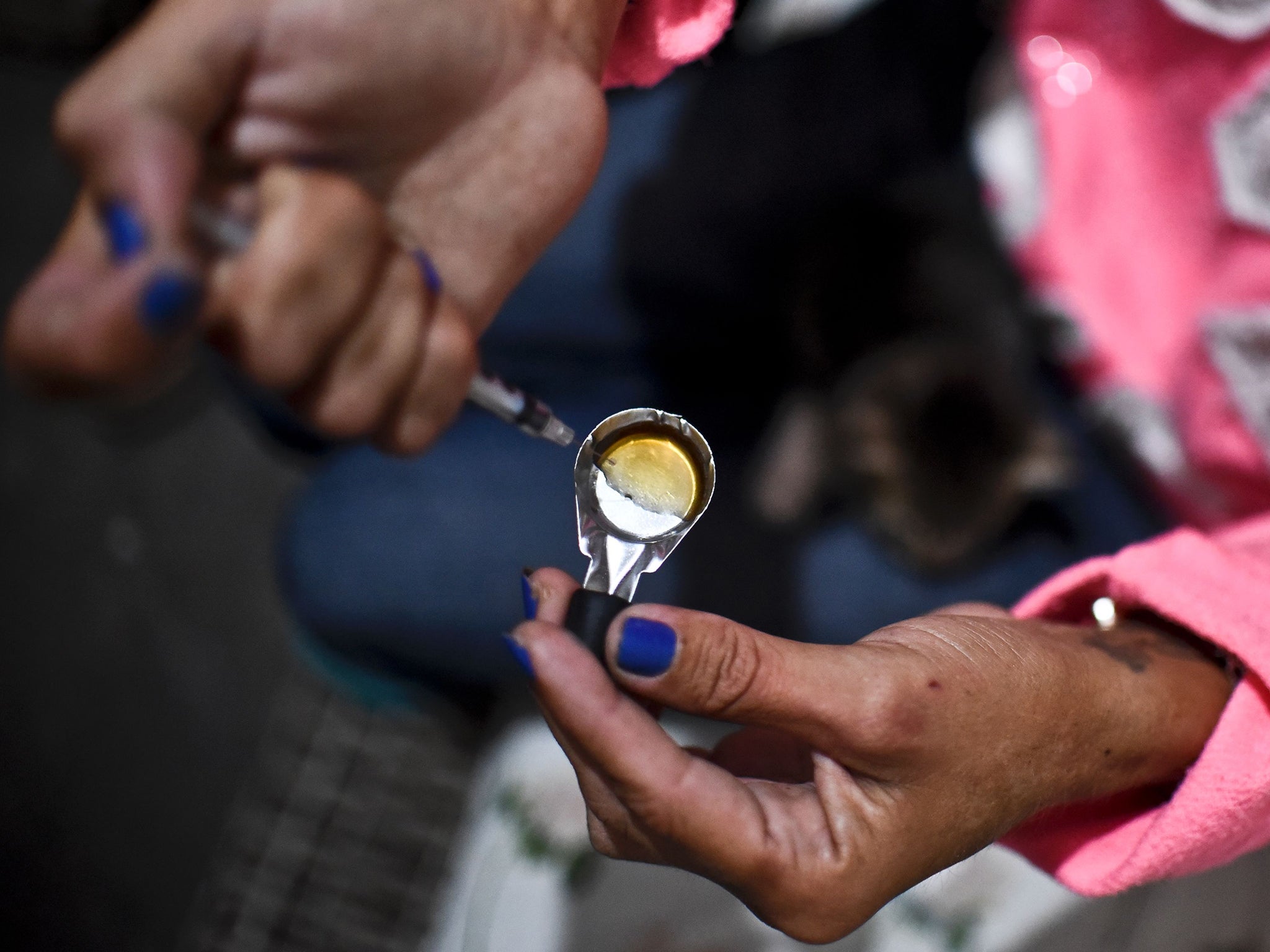The toxic impact of drug panics
Alarm surrounding the bizarre effects of the latest street drug can be seductive and makes for excellent headlines. But, ask Emily Goddard and Ian Hamilton, what about the harm this causes?


People are reportedly consuming substances that produce “superhuman strength”, trigger “face-eating attacks”, eliminate the ability to feel pain… and make them “smell of prawns”. They may read like the taglines for a graphic novel B-movie adaptation, but if these sometimes frankly ludicrous headlines would have you believe anything, it is that the effects of the class of drugs – including the exotically named “monkey dust” – they speak of are anything but fiction. Instead, we are told they are causing “a public health crisis”.
Media coverage of the “epidemic” in the midlands cites Staffordshire Police saying it received an overwhelming 950 reports in three months related to monkey dust. The West Midlands Ambulance Service has been called out 229 times for problems related to the drug since January and paramedics describe witnessing horror scenes akin to those in Night of the Living Dead. Users, meanwhile, are said to be running into traffic, and scaling and leaping off buildings. One police officer likened trying to restrain them as “like you are dealing with someone who thinks they are the Incredible Hulk”.
The psychoactive substance has been called a “family wrecker” for the supposedly “major” role it is playing in parents’ drug use, accounting for nearly a third of all assessments performed by Staffordshire County Council’s children’s services department. It is being blamed for costing councils “millions” of pounds too, with warnings of millions more being needed if there is no intervention.
The health consequences of using such drugs are not to be diminished. Reactions to monkey dust – the street name for the class B cathinone stimulant methylenedioxy-α-pyrrolidinohexiophenone or MDPHP – can include paranoia and hallucinations. It could be argued, however, that the hyperbole and astonishing claims made about it in several publications verge on scaremongering.
Moral panics about drugs are seductive and fuel sensational headlines about wild reactions to substances that often have bizarre and peculiar names; “krokodil” – famed for its gnarly “flesh-eating” properties – and “spice” – reportedly turning Britain into a “zombie nation” – are others. We have been as intrigued as we are horrified about certain drugs for at least a decade.

The beginning of the 20th century saw a groundswell of xenophobia and anti-Chinese sentiment linked to drugs. Newspapers and even the Home Office distributed articles that spoke of the “yellow peril” and the practice occurred simultaneously in Canada when the media there fired up concerns about Chinese opium in Vancouver.
President Nixon, who instigated the “war on drugs”, used the fear and prejudice about black people that many people held in the 1970s to oppress and unfairly target specific communities. Despite relatively equal use of cannabis between white and black people, it was black people who were more likely to be arrested.
It is simplistic to blame only the media for generating such concerns and, as Nixon’s actions demonstrate, drugs panics are a powerful weapon in the arsenal of the war on drugs. Business can have a vested interest in drug panics too. The vast number of Americans becoming dependent on opiates demonstrates the way that pharmaceutical companies are both poacher and gamekeeper in this unfolding tragedy.
They successfully marketed these drugs, creating millions of new opiate-dependent patients. As a consequence, hundreds of people a week are overdosing – but they can be successfully treated with an opiate antidote. In a classic supply and demand move, the cost of these drugs has at least doubled without any justification other than profiteering from misery.
Broadly, drug stories are based on what someone thinks they have taken rather than any forensic investigation of the substance
Some drug panics do use scientific evidence, but frequently fail to tell the whole story. When headlines started circulating about emergency workers overdosing after coming into contact with people who had themselves overdosed after using fentanyl and carfentanyl this initially appeared plausible, particularly when the potency of these drugs was said to be hundreds of times greater than standard opiates.
Much of the evidence about the strength of these substances originates from studies on animals. So while inhaling carfentanyl in a confined space might kill a rat, it is highly unlikely to kill a human.
This information matters because it could delay or put off emergency services crews responding to someone who needs to be treated rapidly. More broadly, drug stories are based on what someone thinks they have taken rather than any forensic investigation of the substance, a near perfect way to ensure misunderstanding and false information.
This should come as no surprise though because untruths sit at the very heart of drug panics. Such myths help to maintain the notion that not all drug users are equal in the eyes of many and that there is a special place in hell for certain groups. In particular, drug panics can reinforce harmful gender stereotypes, amplifying fears and bigotry about distinct factions.
3
Babies born in Britain each day dependent on drugs
No group has felt the brunt of this than pregnant women who use drugs. Stigma is one of the biggest barriers to effective treatment for women who use legal or illegal substances during pregnancy, according to studies. Research found that instead of getting supportive care, many pregnant women feel unwelcome and judged at treatment centres, which could make them hesitant when taking the first step to therapy. With three babies born with neonatal abstinence syndrome (or withdrawal) in the UK every day, it is critical that this stigma is crushed and the prospect of entering treatment made less terrifying.
Jessica Southgate, policy manager for Agenda, the alliance for women and girls at risk, says: “Women who take drugs, especially pregnant women and mothers, are already judged much more harshly because of society’s views about how a woman should behave. This sense of shame and stigma, coupled with male-dominated addiction services being unwelcoming places and fears over their children being taken away, means women are sometimes reluctant to get help.

“While a public ‘panic’ might raise the profile of addiction as an issue, this does not necessarily mean increased support, and it does not make it any easier for women to get the help they need. It may even make it more difficult for them to access support by adding to feelings of shame. We need to move beyond the headlines and start addressing the complex range of reasons why women use drugs, which is often a way of coping with trauma and abuse, and ensure appropriate support is there to help them rebuild their lives.”
Similarly, panics play into misinformed and anachronistic fears surrounding mental health problems, as we can see from recent headlines. Monkey dust has been heavily linked with instability, unpredictability, psychosis, mood changes and aggression. Conflating problematic drug use and mental health problems is not only flawed but also damaging. It intensifies stigma and propagates a message that it is reasonable to be afraid of those who might be experiencing psychosis because they are inherently dangerous and volatile.
It is almost as though politicians can only think about drugs in a binary way: good drugs or bad drugs
People who are homeless are another marginalised group, and one of the most vulnerable in society. This is because they are the most visible, particularly when intoxicated with drugs. Unlike most of us who can retreat and have privacy during the times when we are vulnerable, those without shelter are exposed as they display the effects of these psychoactive drugs. Publishing images and stories of these reactions helps to uphold efforts by some to dehumanise people who are sleeping rough, while the argument against giving money to people on the streets gorges on it. Conveniently, all this overlooks that in reality the substances soothe and offer a temporary escape for those with little reason for hope, and that are experiencing unbearable thoughts and feelings.
Indeed, drug panics can cause real harm to health by distracting from the underlying problems that some people are trying to solve by using substances. The reaction of politicians and others in power to the most recent drug panic demonstrates this. Rather than discuss the cause of problematic drug use, they prefer to talk about tougher sanctions for those using the drugs or investing in kit that will be able to detect drugs in prisons, for instance.
Avinash Tharoor, policy officer at drugs law charity Release, agrees and says reporting and political discourse that use alarmist and inaccurate statements concerning drug use are being used to support the argument for inadequate treatment. “From references to opioid use as an ‘epidemic’ to fanciful descriptions of ‘zombies’ and ‘cannibals’, such needless hysteria perpetuates the stigmatisation of people who use drugs,” he explains. “This, in turn, further marginalises vulnerable people – including homeless people and those with mental health issues – dissuading them from seeking help, and thereby increasing the potential harms of their drug use.
“Such moral panics also contribute to the narrative that there is something inherently ethically wrong with people who use drugs; this narrative is used to justify harsh punishments against offenders, and cuts to treatment services. People who use drugs deserve to be treated with compassion and humanity, not disdain and ostracism.”
And that is not the only way drug panics stunt progressive thinking and policies. They can cause additional harm to health by holding up of the development of new medications and therapeutic practices with psychedelics for a range of conditions. Accepting that a psychoactive drug, such as LSD or ketamine, might have a therapeutic potential means rejecting a long-held view that these drugs are harmful. It is almost as though politicians can only think about drugs in a binary way: good drugs or bad drugs; there is no intelligence used to inform policy.
There can also be complex unintended consequences of hysteria surrounding a substance. Rather than putting people off, it might lead some to using a drug that they otherwise would not have. We do not all have the same tolerance or threshold for risk, some people are attracted to it and others may feel they have nothing to lose.

Then there is the problem of credibility if the drug story bears no resemblance to most people’s experience of using the substance in question. And if the drug panic is endorsed by politicians or health officials people are less likely to listen to future warnings that could prevent harm.
18%
Less drug treatment funding in England than in 2013-14
Irrespective of the drug there are key ingredients that are needed to create hysteria:
1. The drug must sound exotic or scary.
2. It must produce bizarre effects.
3. Do not wait for toxicology reports to confirm what the drug actually is.
4. Suggest we all are at risk directly or indirectly.
5. One case example is sufficient.
6. Must include a group that is marginalised.
So despite drug panics coming and going, in the background there is one constant: people who are in need of support and empathy. Drug panics neatly sidestep this, but reality is not nearly as seductive.
Funding for drug treatment has been slashed to the tune of £162m (or 18 per cent) in England since 2013-14. And this startling statistic is set to a backdrop of record numbers of people dying as a result of drugs nationwide, with 3,756 drug-related deaths documented in 2017.
What makes this fact more alarming is that fewer people are using drugs on a regular basis than a decade ago, down from 5.4 per cent of the population in 2007-08 to 4.3 per cent in 2017-18. More people are, however, seeking treatment, from 265,832 in 2007-08 to 279,973 now. Yet these treatment services are not always a realistic option for some because waiting times can be as long as three weeks for a methadone prescription and NHS-funded beds in rehab centres are dwindling at a worrying pace.
Drug suppliers do not have waiting times or set up multiple appointments, they do not ask you to repeat your deeply personal and painful story multiple times to several different people. Drug supply and drugs are designed to be effective at alleviating social, psychological and physical discomfort.
Little wonder that people find their own solutions to the immediate and persistent problems they face. So although generally fewer people are using drugs this disguises smaller groups which are self-medicating. With drugs such as monkey dust sold for a fraction of the cost of heroin, is it any wonder the use of these substances persists for marginalised groups?
It is usually foolish to make predictions, but there will be another drug panic before long. It will play on our fears, single out a marginalised group and prompt a call for punishment rather than asking difficult questions about why people seek psychoactive soothing in the first place.
Join our commenting forum
Join thought-provoking conversations, follow other Independent readers and see their replies
Comments